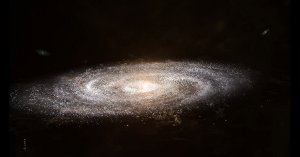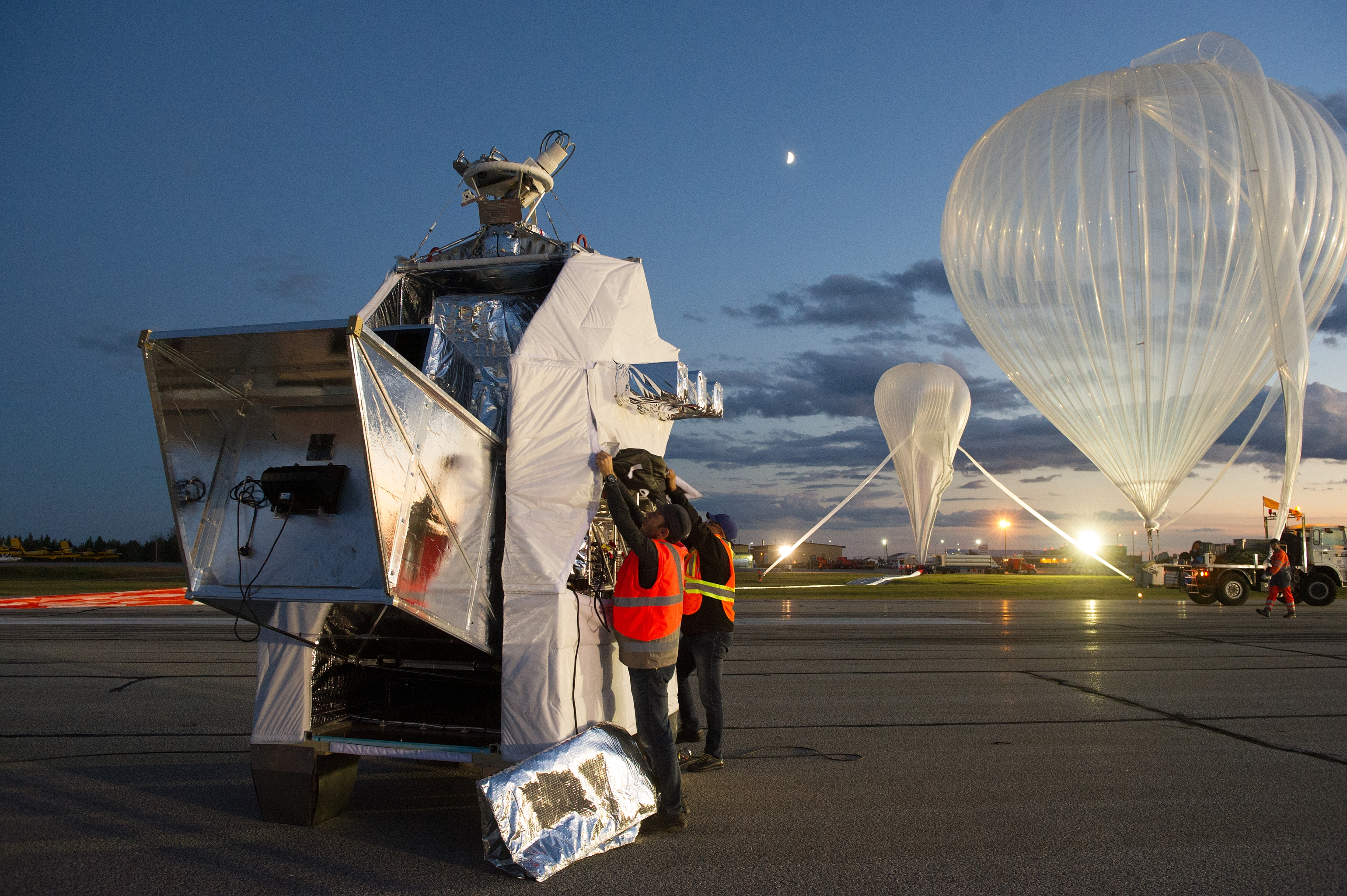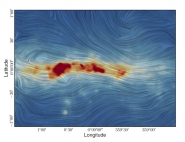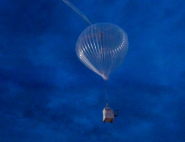Mission

Scientific Objectives
The Pilot mission is an astronomy mission of CNES and IRAP's scientific programme.
Pilot itself is an instrument (a photometer with a focal plane cooled to 0.3 K) that has been built in partnership between CNES and several international laboratories. Key partners in the design and construction of the instrument include IRAP (Principal Investigator institute), the Institut d'Astrophysique Spatiale (IAS) in Orsay for the photometer, and the Commissariat à l'Énergie Atomique (CEA) in Saclay for the focal plane detector technology (originally developed for the Herschel space mission). Pilot instrument also comprise contributions from Roma and Cardiff universities. Cnes designed and built the gondola and the diurnal star tracker ESTADIUS.
The Pilot project is dedicated to studying interstellar matter and signals from the early Universe at submillimetre wavelength. With a resolution of a few arcminutes, it measures the polarization emission produced by interstellar dust at wavelengths around 240 micrometres.

Pilot is the only astronomy experiment in the world that conducts large-scale mapping of the polarized emission in this wavelength range.
By observing from the stratosphere and using large-format bolometric detectors, the PILOT experiment is much more sensitive than observations that can be obtained from the Earth’s surface.
PILOT is complementary to the numerous ground-based and balloon experiments that aim to measure the polarization of the Cosmic Microwave Background (CMB), and for which the polarized emission of the foreground is often ignored. PILOT observations also complement data from the Planck space mission, by obtaining measurements at higher frequencies in the infrared domain.
In addition to the detection of polarized emission, PILOT maps the total intensity of the thermal dust emission with extremely high precision. These measurements complement previous observations at far-infrared to centimetre wavelengths by balloon and space missions such as Pronaos, Archeops and Planck.
Results from PILOT will improve our understanding of the magnetic properties of interstellar dust grains and the structure of the magnetic field in the diffuse interstellar medium. This knowledge is required to characterize the contamination of signals from the early Universe by matter in our own Galaxy. Due to PILOT’s high sensitivity to diffuse interstellar material, PILOT is a precursor of future cosmology space missions, and will help define instrumentation and other technical choices for these missions.
Three PILOT flights (at least) are required by the PILOT Science Team: they are currently scheduled for 2015, 2017 and 2018. Each flight will spend 20 to 24 hours at ceiling (i.e. in the stratosphere at an altitude of approximately 40 km). PILOT observations will map large regions of the Galaxy.
The PILOT gondola flew successfully over Canada during 24 hours on 20 and 21 September 2015. The scientific results are currently being processed and analyzed. The second flight is being prepared, and is planned to take place from Australia in April 2017.
Mission
The PILOT experiment consists of a stratospheric balloon with a scientific gondola containing an astronomy instrument that measures electromagnetic radiation at submillimetre wavelengths.
The PILOT aerostat measures over 300 metres in height. It consists of the balloon with its flight chain, and all the on-board flight control equipment.
The launcher is an open stratospheric balloon. It flies to an altitude of 40 km in order to minimise absorption and emission from the Earth’s own atmosphere. The balloon has the following components:
- Carrying Vehicle (VP);
- valve;
- envelope: at ceiling, the diameter of the envelope is about 120 m, with an estimated volume of over 800,000 cubic metres;
- envelope gondola (NEV).
The flight chain is composed of:
- the main separator;
- the parachute chain: the parachute, which measures 27 metres in length, enables recovery of the scientific gondola at the end of the flight. When the parachute is open, the scientific gondola can sustain up to 5 g;
- the operational upkeeping gondola (NSO), which controls the reception and transmission of the data between the on-board segment and the ground segment. Pilot uses the NSO NOSYCA system designed and qualified a few years ago. NOSYCA is a complete (on board + ground) flight control system that has been developed by CNES to meet the safety standards of CNES's DCT/BL division. The previous system used for BSO flights didn't meet redundancy requirements which are stricter now.
- the payload (NCU), also called scientific gondola, which houses the scientific instrument.

© CNES/GRIMAULT Emmanuel, 2015

